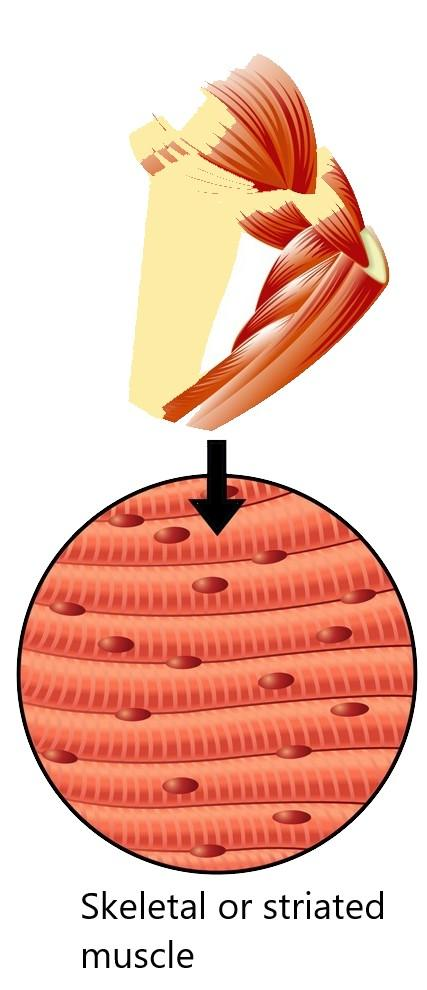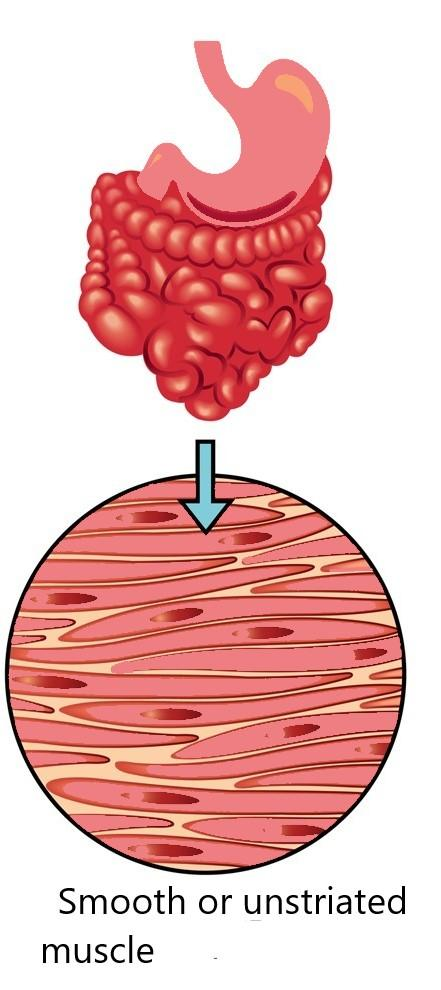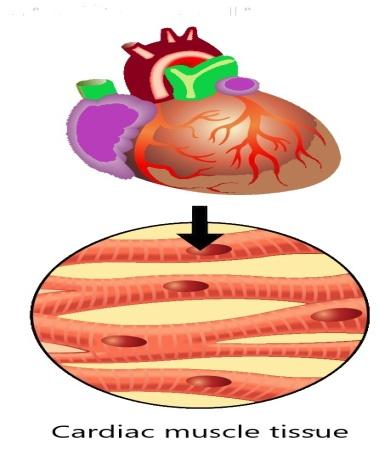
Differentiate between striated, un-striated and cardiac muscles on the basis of their structure and site/location in the body.
Answer
418.3k+ views
Hint: Our body is made up of different muscles or tissue that functions together and gives strength and structure to our body. The muscles are of different shape and size and found in different parts of the body. Some muscles can be controlled by us and some functions are automatic.
Complete answer:
To answer this question, we have to first know about the muscles in the human body. There are approximately six hundred forty muscles inside a human body. Every muscle consists of one pair of identical bilateral muscles that present in both sides. The human body consists of three types of muscles; smooth, cardiac, and skeletal muscles. The smooth muscles form the wall of the intestine, blood vessels, uterus, and muscle of the inner eye. The cardiac muscles form the wall of the heart that controls the contraction of the heart, and the skeletal muscles attach the muscles to the bones.
Now, the difference between the striated, unstriated, and cardiac muscles are:
Note:The cardiac and the smooth or unstriated muscles are involuntary as they cannot be controlled by us; they work automatically. For example the heart muscle, we cannot control the heart according to our need but we can control our skeletal muscle that is found in the hand and legs, therefore, striated muscles are called voluntary muscle.
Complete answer:
To answer this question, we have to first know about the muscles in the human body. There are approximately six hundred forty muscles inside a human body. Every muscle consists of one pair of identical bilateral muscles that present in both sides. The human body consists of three types of muscles; smooth, cardiac, and skeletal muscles. The smooth muscles form the wall of the intestine, blood vessels, uterus, and muscle of the inner eye. The cardiac muscles form the wall of the heart that controls the contraction of the heart, and the skeletal muscles attach the muscles to the bones.
Now, the difference between the striated, unstriated, and cardiac muscles are:
| Striated muscle | Unstriated muscle | Cardiac muscle |
| The shape of the striated muscles are cylindrical and multinucleated. | The shape of the unstriated muscles are spindle and uninucleated. | The shape of the cardiac muscles are cylindrical and uninucleated. |
| The striated muscles are found in the hand and legs part of the body. | The unstriated muscles are found in the mouth, stomach, intestine, iris, etc part of the body. | The cardiac muscles are found in the heart. |

| 
| 
|
Note:The cardiac and the smooth or unstriated muscles are involuntary as they cannot be controlled by us; they work automatically. For example the heart muscle, we cannot control the heart according to our need but we can control our skeletal muscle that is found in the hand and legs, therefore, striated muscles are called voluntary muscle.
Recently Updated Pages
The correct geometry and hybridization for XeF4 are class 11 chemistry CBSE

Water softening by Clarks process uses ACalcium bicarbonate class 11 chemistry CBSE

With reference to graphite and diamond which of the class 11 chemistry CBSE

A certain household has consumed 250 units of energy class 11 physics CBSE

The lightest metal known is A beryllium B lithium C class 11 chemistry CBSE

What is the formula mass of the iodine molecule class 11 chemistry CBSE

Trending doubts
How is phenol converted to salicylic acid class 11 chemistry CBSE

Why was the Vernacular Press Act passed by British class 11 social science CBSE

Arrange Water ethanol and phenol in increasing order class 11 chemistry CBSE

Name the nuclear plant located in Uttar Pradesh class 11 social science CBSE

One Metric ton is equal to kg A 10000 B 1000 C 100 class 11 physics CBSE

What steps did the French revolutionaries take to create class 11 social science CBSE




